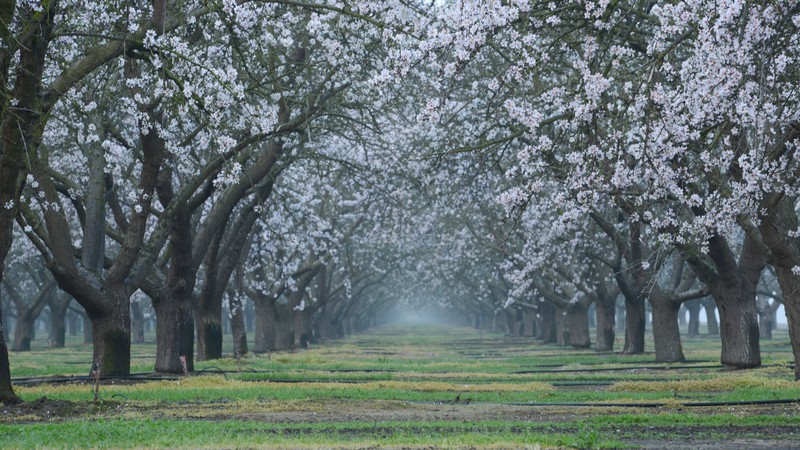LA Times report, ‘After years of rapid growth, California’s almond industry struggles amid low prices,’ suggests bankruptcies may represent an opportunity.

California almond orchard in bloom. The state produces the vast majority of the world’s almond supply—about 80 percent. That number has skyrocketed over the past decade saraporn, Shutterstock
‘The farmer moved the rain. The more water he got, the more crops he planted, and the more crops he planted, the more water he needed to plant more crops, and on and on. One million acres of the valley floor, greater than the size of Rhode Island, are now covered in almond trees.’
When the great Fresno-based journalist Mark Arax wrote that in 2018, for a piece later included in his book The Dreamt Land: Chasing Water and Dust Across California, he reported that the million acres already planted in almonds, and the many square-miles of land planted in other water-intensive crops, was growing.
“Even as the supplies of federal and state water have dropped to near zero, agriculture in Kern [County] keeps chugging along, growing more intensive. The new plantings aren’t cotton, alfalfa, or carrots — the crops a farmer can decide not to seed when water becomes scarce. These are trees and vines raised in nurseries and put into the ground at a cost of $10,000 an acre to satisfy the world’s growing appetite for nuts and fruits.”
California produces the vast majority of the world’s almond supply—about 80 percent. That number has skyrocketed over the past decade—almond orchards covered 760,000 acres in 2011 and more than 1.3 million acres in 2022. That period, of course, coincided with a prolonged drought. And when farmers and the investment companies that backed them expanded the nut orchards and drilled wells to pump groundwater, the locked-in water demands added to the strains on the state’s declining aquifers.
On Monday, the Los Angeles Times reported that the water-guzzling party may be coming to an end.
“For much of the last decade, almonds have been such a lucrative crop that growers and investment firms have poured money into planting new orchards across vast stretches of California farmland.
“Now, the almond boom has fizzled and the industry has entered a slump. Prices have dropped over the last several years, and the state’s total almond acreage has started to decrease as growers have begun to tear out orchards and plant other crops.”
Jake Wenger, general manager of an almond-hulling plant in Modesto, said prices for premium almonds have dropped by half over the decade. The growers being hurt the worst include investor groups that bought land when prices were high and now have large debts.
This may not be entirely bad news. Chirag Bhakta, California director of the environmental group Food and Water Watch, said the economic threat represents an “opportunity for us to shift what’s been grown on that land to actually reflect what’s best for California” and the state’s water needs.